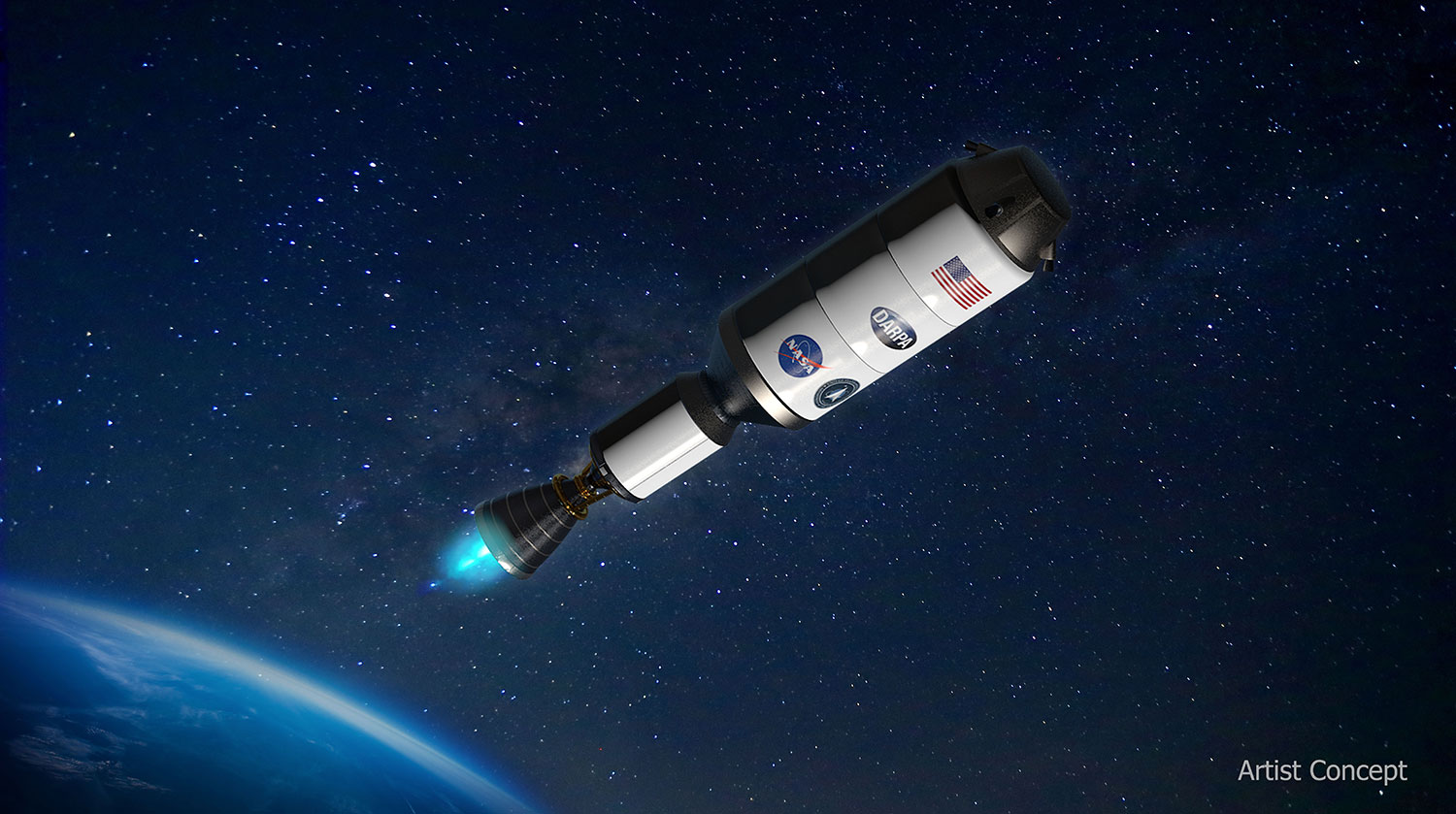
DARPA, via its Demonstration Rocket for Agile Cislunar Operations (DRACO) program, is collaborating with NASA to develop and demonstrate a nuclear thermal rocket engine (NTR) in space, an enabling capability for the space agency’s future long-duration spaceflight missions. The goal is to test an NTR-enabled spacecraft in Earth orbit during the 2027 fiscal year.
The use of a nuclear thermal rocket allows for faster transit time, reducing the risk for astronauts. Reducing flight time is a key component of manned missions to Mars, as longer flights require more supplies and more reliable systems.
According to the DARPA, the advanced nuclear thermal propulsion technology offers a high thrust-to-weight ratio of around 10,000x, greater than electric propulsion and with two-to-five times greater efficiency than in-space chemical propulsion.
Nuclear thermal propulsion (NTP) systems aren’t new. The last nuclear thermal rocket engine tests conducted by the United States occurred more than 50 years ago under NASA’s Nuclear Engine for Rocket Vehicle Application and Rover projects.
DRACO is now leveraging lessons learned from past NTR reactor technology. But instead of using highly-enriched uranium, DRACO is using high-assay low-enriched uranium (HALEU) fuel to have fewer logistical hurdles on its ambitious timeline. For added safety, DARPA plans to engineer the system so that the DRACO engine’s fission reaction will turn on only once it reaches space.
In a nuclear thermal rocket engine, a fission reactor is used to generate extremely high temperatures. The engine transfers the heat produced by the reactor to a liquid propellant, which is expanded and exhausted through a nozzle to propel the spacecraft. Nuclear thermal rockets can be three or more times more efficient than conventional chemical propulsion.
“With this collaboration, we will leverage our expertise gained from many previous space nuclear power and propulsion projects,” said Jim Reuter, associate administrator for STMD. “Recent aerospace materials and engineering advancements are enabling a new era for space nuclear technology, and this flight demonstration will be a major achievement toward establishing a space transportation capability for an Earth-Moon economy.”
NASA and DARPA to test nuclear thermal rocket engine by 2027
Source: Tambay News

0 Comments